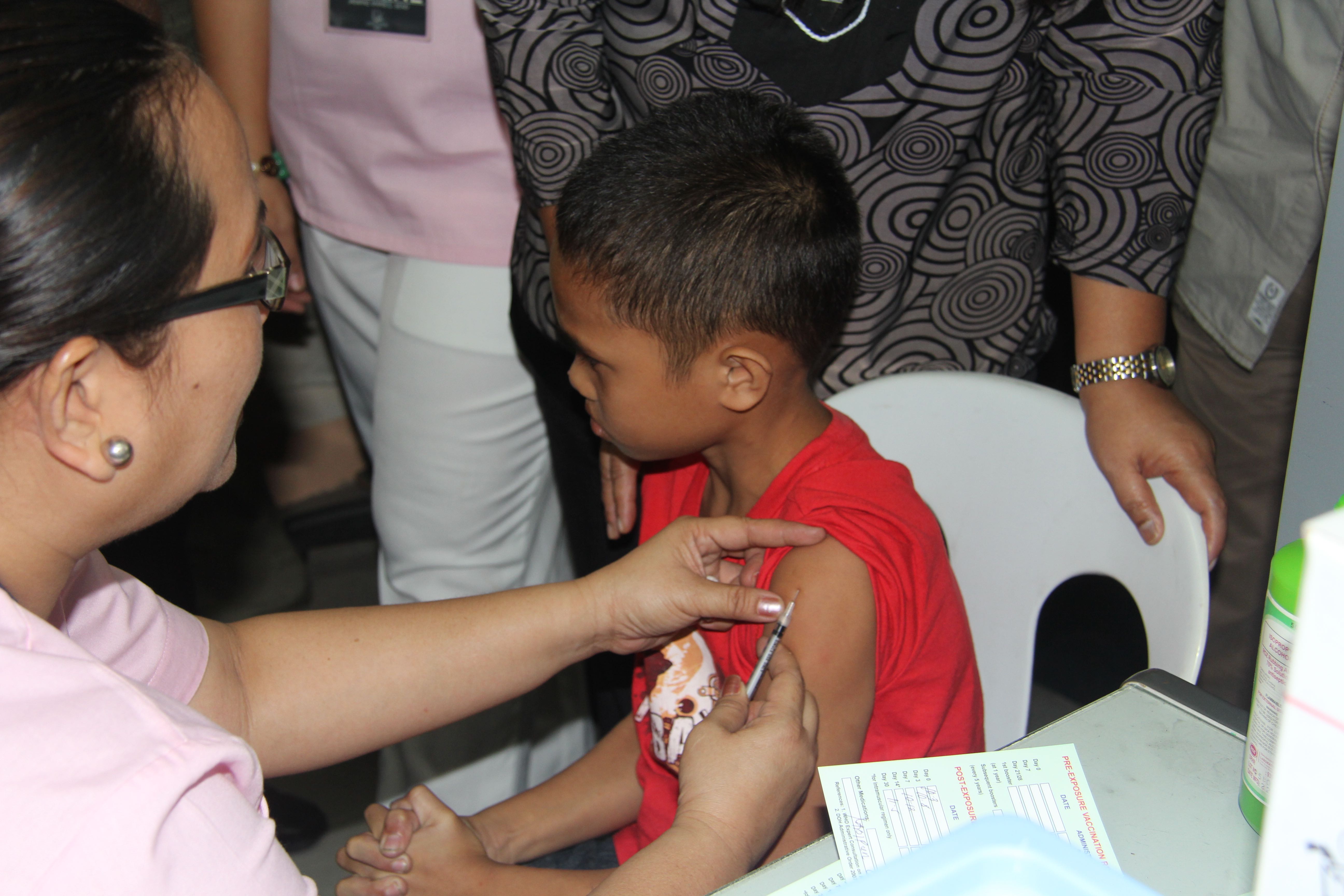Featured Article - 25 April 2016
Until dog vaccination can eliminate rabies, we need access to PEP
This week is World Immunization Week. It will draw attention to the successes and remaining challenges of maximizing the potential of the world’s most successful and cost effective medicines – routine childhood vaccinations.

Routine vaccination has become accepted as something every child in the world should be able to benefit from. With this perspective, the Vaccine Alliance (GAVI) supports the world’s poorest countries towards the effective delivery of vaccines. Global support for childhood vaccination, epitomised by the World Health Assembly endorsement of the Global Vaccine Action Plan has resulted in enormous successes. During 2014, 115 million infants worldwide (86% of them) received 3 doses of diphtheria-tetanus-pertussis (DTP3) vaccine. By 2014, 129 countries had reached at least 90% coverage of DTP3 vaccine, a statistic that is now widely used as an indicator for Universal Health coverage.
In 1988, there were an estimated 350,000 cases of polio in over 125 countries. The disease has been brought to the brink of eradication by vaccination, eliminated from WHO’s South-East Asia Region of 11 countries (including India) in 2014, and eliminated from Nigeria in 2015 even against the backdrop of the Ebola crisis. This data confirms the successes that immunisation has realised to date, but there is more to be done, and a further 18.7 million children still needing the global community’s help to receive all the vaccines they need.
Imagine if additional effort was made to make rabies vaccine accessible for all those children and adults who needed it. Across the globe, delivery of rabies post exposure vaccination to just over 29 million people bitten by dogs each year is estimated to have prevented 2.92 million deaths annually. It has the potential to end all human deaths from rabies. Compared to other vaccines, rabies PEP is an incredibly efficient means of preventing deaths, because we can target only those individuals that are at high risk of rabies (because they were bitten by animals). The total cost per death averted for rabies vaccine is very low relative to other GAVI provided vaccines, especially using the intradermal route of administration.
The high efficiency of human rabies vaccine has been recognized by a GAVI investigation, but those same factors that make it so efficient are also responsible for the lack of progress in delivering the vaccine to everyone who needs it. Bite victims need to be treated and vaccinated immediately after the bite exposure to ensure that rabies does not develop. Unlike routine childhood immunisation programmes, it is not straightforward to predict exactly where and when rabies vaccine will be needed. So realizing the potential of human rabies vaccine, although incredible valuable, is not so easily achieved. Innovation in health delivery systems is badly needed and could allow disadvantaged populations to access many other types of health intervention beside rabies.

There is another vaccine that could solve our rabies quandary. Rabies is principally an animal disease and routine vaccination of dogs could eliminate the rabies virus from the disease reservoir, viz. domestic dogs. This preventative rather than reactionary use of vaccines is more analogous to the routine immunisation of children and is the only path towards elimination of the disease. All children would be protected because they were no longer at risk of rabies from dogs.
However, until the time that routine vaccination of dogs can eliminate the rabies risk to people bitten, we need to increase access to life saving PEP, and fully realise its potential.
